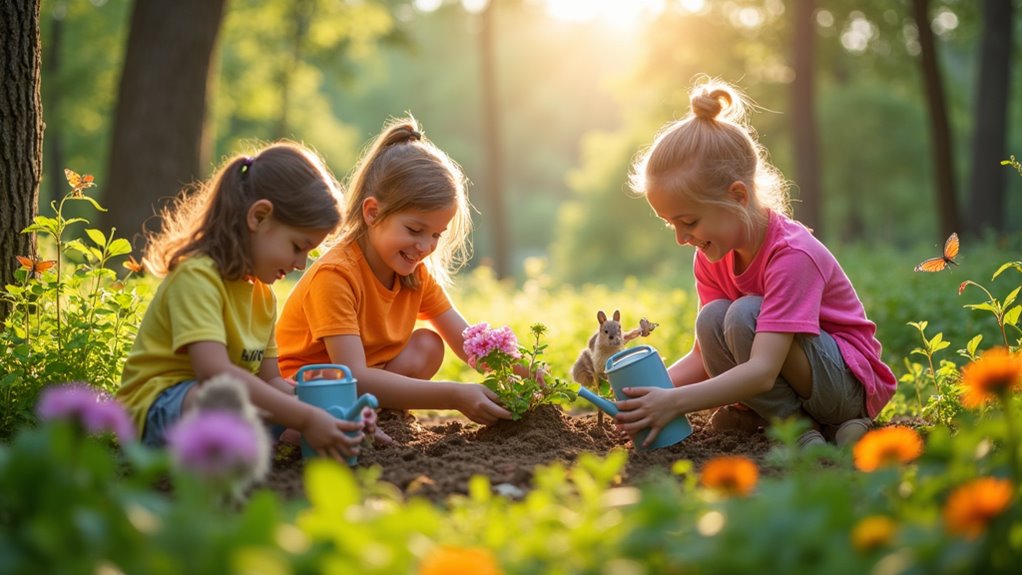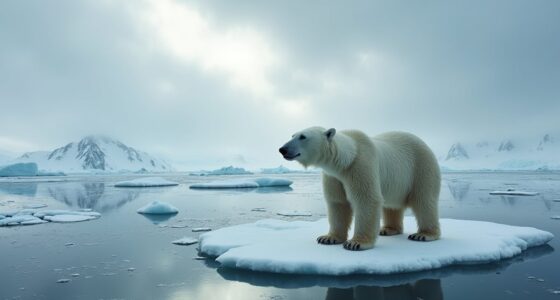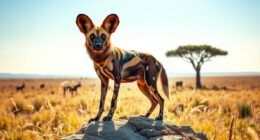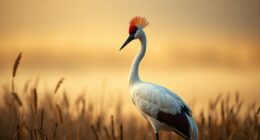You can make a big difference in wildlife conservation by doing fun activities like bird watching, planting native trees, and participating in local clean-ups. Taking note of animal sightings or helping track wildlife data supports scientists and protects habitats. Respect nature and share what you learn with friends to raise awareness. Small actions add up, and there’s so much more you can explore to help animals thrive—keep going to discover more ways to get involved!
Key Takeaways
- Participate in bird watching and nature walks to observe wildlife and learn about their habitats.
- Support local conservation projects like planting native trees and cleaning up parks.
- Use animal tracking apps and record sightings to help scientists monitor wildlife.
- Share your wildlife observations with friends and family to raise awareness about conservation.
- Respect nature by avoiding habitat destruction and practicing eco-friendly habits during outdoor activities.
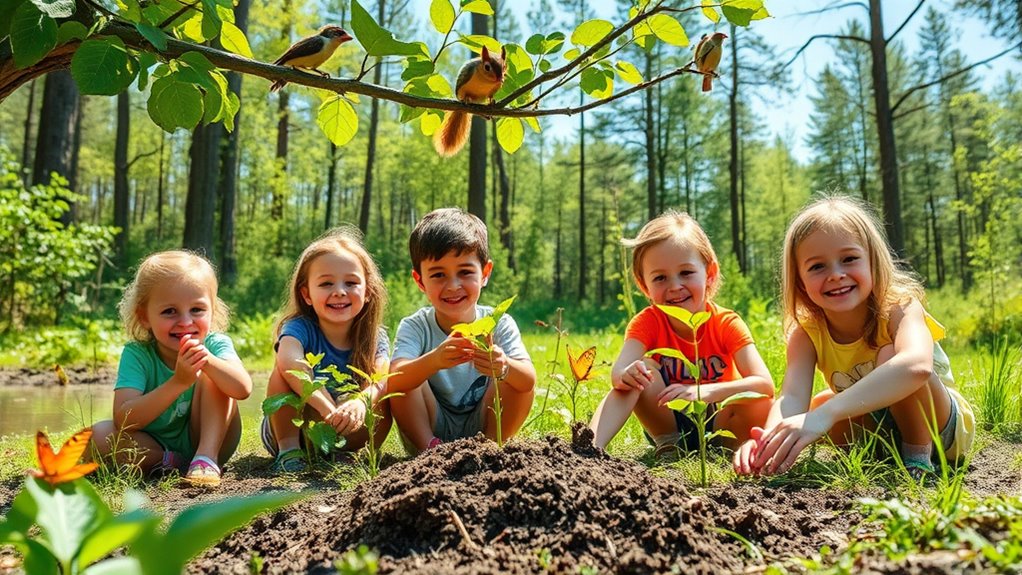
Have you ever wondered why animals and plants are so important to our planet? They keep everything balanced, and without them, our environment wouldn’t survive. When you think about wildlife conservation, it’s all about protecting these creatures and their homes. One way to do this is by understanding bird habitats. Birds live in different places — forests, wetlands, grasslands — and each habitat provides what they need to survive, like food, shelter, and safe places to nest. By learning about bird habitats, you can help make certain that these areas stay healthy and full of life. For example, planting native trees or supporting local parks can create more safe spaces for birds. Additionally, animal tracking is a fascinating tool that scientists use to learn about animals and their habits. When you help track animals, you’re helping scientists gather data on where animals go, how they behave, and what threats they face. This information is essential for making decisions about conservation efforts. You might participate in citizen science projects where you record sightings or use apps that help track animal movements. This way, you become an active part of protecting wildlife, even from your own home. Understanding ecosystem balance is also key because it highlights how every creature plays a role in maintaining a healthy environment. Recognizing the importance of species diversity can motivate you to protect a variety of animals and plants, ensuring the resilience of ecosystems. Exploring conservation funding methods can help you understand how resources are allocated to protect wildlife and their habitats. Getting involved in activities like bird watching or nature walks is a fun way to observe animals in their natural environment. When you spot a bird, try to identify its species and note where it lives. This kind of activity not only helps you learn but also contributes to bird habitat maps used by conservation groups. Research shows that habitat destruction is one of the biggest threats to wildlife, so learning how to prevent it can help protect many species. If you notice a bird struggling or an unusual number of a certain species, tell an adult or a scientist. Your observations can help track changes in bird populations or habitat health. Supporting local conservation projects, like clean-up days or planting native plants, also makes a big difference. These efforts improve habitats and give animals a better chance to thrive. Remember, every small action counts. By staying curious about wildlife, you’re helping build a future where animals and plants continue to flourish. Whether it’s through learning about bird habitats, participating in animal tracking, or simply respecting nature, you’re playing an essential role in preserving the planet’s incredible diversity. So get outside, explore, and find ways to make a positive impact — because the more you learn and act, the better our world becomes for all living things.
Frequently Asked Questions
How Can I Start a Wildlife Conservation Club at School?
Starting a wildlife conservation club at school is exciting! First, gather friends who care about animals and nature. Then, pitch your idea to teachers or school administrators. Include activities like wildlife photography to capture local species and organize habitat restoration projects. Use social media or flyers to promote your club. Your passion and teamwork will inspire others to join, making a real difference in protecting wildlife and their habitats.
What Are Some Fun Activities to Help Local Wildlife?
Did you know that engaging in bird watching and habitat planting can considerably help local wildlife? To make a difference, you could organize fun activities like bird watching walks, where you spot and learn about local birds, or plant native trees and flowers to provide food and shelter. These activities not only support wildlife but also make conservation enjoyable and educational for you and your friends.
How Do Animals Adapt to Their Environments?
Animals adapt to their environments through amazing strategies like animal camouflage, helping them blend in and stay safe. You might notice how some animals change color or develop special features to survive in different habitats. Environmental adaptation allows animals to find food, avoid predators, and thrive. By understanding these adaptations, you can appreciate how each creature is uniquely suited to its surroundings, making nature an incredible and diverse world to explore.
Can Kids Help in Saving Endangered Species?
Sure, kids can save endangered species—because nothing beats a superhero in sneakers, right? You can try wildlife photography to spot and document animals, raising awareness. Volunteer for animal rescue, giving creatures a second chance. Your small actions can inspire others and contribute to conservation efforts. Remember, even tiny hands can make a big difference in protecting our planet’s precious wildlife. So, get involved and be the change!
What Are the Best Books About Wildlife Conservation for Kids?
You’re looking for the best books about wildlife conservation for kids, and there are some great options. Look for books with exciting wildlife stories that capture your imagination and introduce conservation heroes who are making a difference. These stories inspire you to act and learn more about protecting animals and their habitats. With engaging illustrations and inspiring messages, these books make understanding conservation fun and motivate you to help save endangered species.
Conclusion
By learning about wildlife, by taking action, and by spreading awareness, you can truly make a difference. Protecting animals, preserving habitats, and inspiring others are all ways you can contribute to conservation. Every small step matters, every kind act counts, and every voice can create change. So, stay curious, stay compassionate, and stay committed—because your efforts today can help guarantee a wild and wonderful world for tomorrow.
